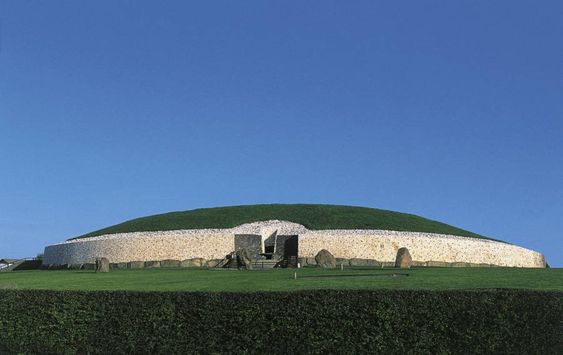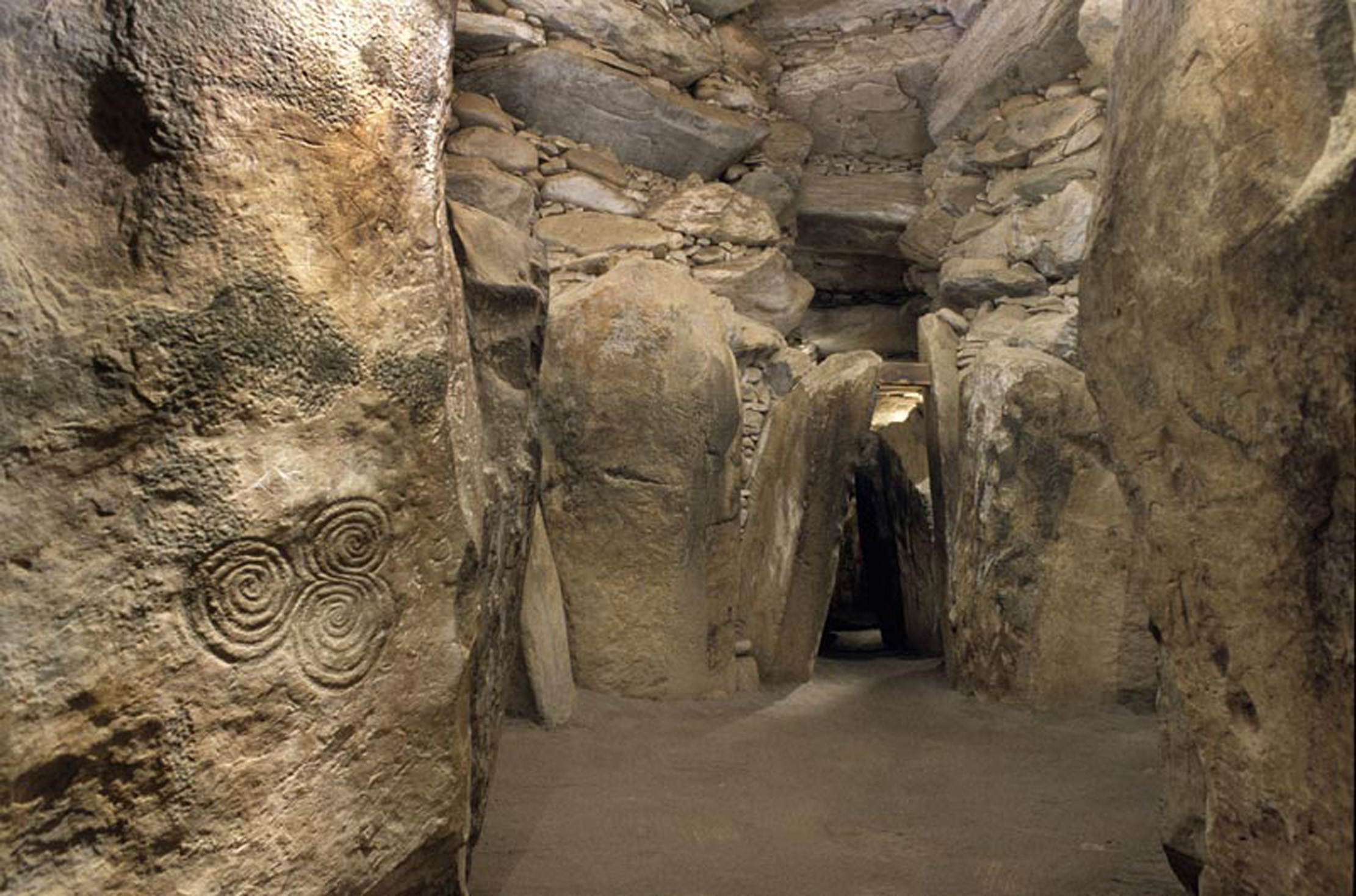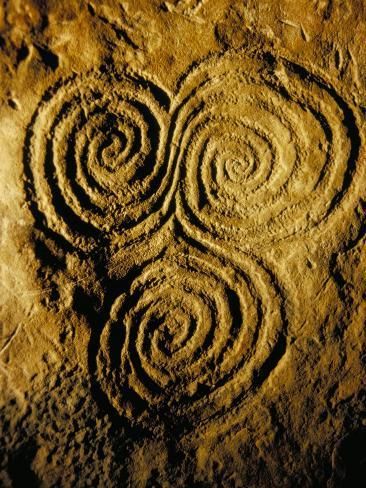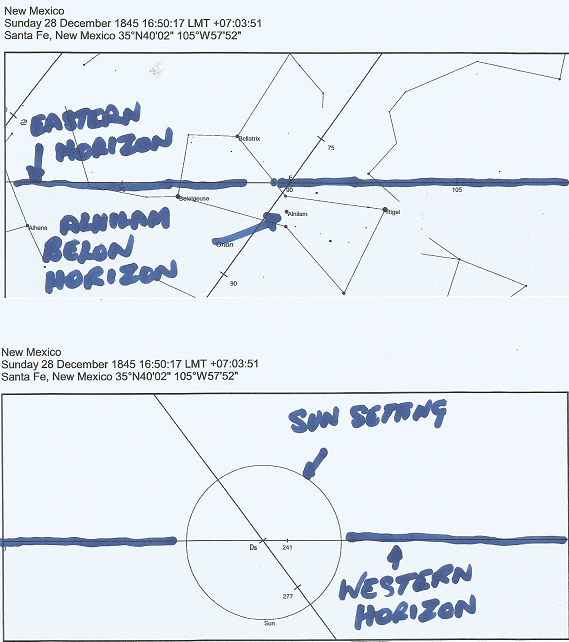It looks like you're using an Ad Blocker.
Please white-list or disable AboveTopSecret.com in your ad-blocking tool.
Thank you.
Some features of ATS will be disabled while you continue to use an ad-blocker.
share:
a reply to: Byrd
We are talking about the Gods here. Mythos changes as it moves through culture. Aset? Isis / Sopdet / Aset (i thought that was the original name not Sopdet as you are suggesting.
Regardless what ever name you want to put on it is a Goddess irrefutably associated with Sirius. You answer is dismissive and fails to really address the question asked honestly.
Osiris as you failed to mention also has strong connotations with Sirius. It was Osiris (which is Orion in the night sky was the king that married ISIS.)
You would do yourself a credit and a service understanding this mythos in terms of the starts . This is what it is all about.
Its all about the stars
:-)
Hello
The parts that I watched about Egypt weren't correct. Sirius was neither Isis nor Osiris... it was Sopdet: en.wikipedia.org...
We are talking about the Gods here. Mythos changes as it moves through culture. Aset? Isis / Sopdet / Aset (i thought that was the original name not Sopdet as you are suggesting.
Regardless what ever name you want to put on it is a Goddess irrefutably associated with Sirius. You answer is dismissive and fails to really address the question asked honestly.
Osiris as you failed to mention also has strong connotations with Sirius. It was Osiris (which is Orion in the night sky was the king that married ISIS.)
You would do yourself a credit and a service understanding this mythos in terms of the starts . This is what it is all about.
Its all about the stars
:-)
Hello
edit on 21-2-2020 by purplemer because: (no reason given)
I only mention Pike because you said to me in a PM that he believed our Blazing Star IS Sirius. (I'm not sure about that; could you provide chapter and page?)
Hello to you sorry for late replies. I have been traveling about a lot of recent. Here is a link let us know what you think.
MORALS AND DOGMA.
APPRENTICE.
To find in the BLAZING STAR of five points an allusion to the Divine Providence, is also fanciful; and to make it commemorative of the Star that is said to have guided the Magi, is to give it a meaning comparatively modern.
Originally it represented SIRIUS, or the Dog-star, the forerunner of the inundation of the Nile; the God ANUBIS, companion of Isis in her search for the body of OSIRIS, her brother and husband.
www.sacred-texts.com...
KNIGHT OF THE BRAZEN SERPENT.
The Ancient Astronomers saw all the great Symbols of Masonry in the Stars. Sirius still glitters in our Lodges as the Blazing Star, (l’Etoile Flamboyante). The Sun is still symbolized by the point within a Circle
www.sacred-texts.com...
The Blazing Star in our Lodges, we have already said, represents Sirius, Anubis, or Mercury, Guardian and Guide of Souls. Our Ancient English brethren also considered it an emblem of the Sun. In the old Lectures they said: "The Blazing Star or Glory in the centre refers us to that Grand Luminary the Sun, which enlightens the Earth, and by its genial influence dispenses blessings to mankind." It is also said in those lectures to be an emblem of Prudence. The word Prudentia means, in its original and fullest signification, Foresight: and accordingly the Blazing Star has been regarded as an emblem of Omniscience, or the All-Seeing Eye, which to the Ancients was the Sun.
www.sacred-texts.com...
edit on 21-2-2020 by purplemer because: (no reason given)
originally posted by: yourmaker
What importance would a binary system have in terms of spirituality?
I think it has a the greatest of impacts. The yuga cycle (vedic) demonstrates a fall from a golden age to a spiritually poor age) This mythos you find repeated in nearly all culture wide. This may well be defined by the relationship of our two suns and the effect they have on us both physically and spiritually.
The Dogon talk about a third sun in the Sirius system. They believe that this sun has a direct effect on our sun and earth in a way no other sun does and also impact us directly in our relationship with spirit.
It is by no accident that the word soul and sol sound the same.
:-)
originally posted by: Riffrafter
originally posted by: yourmaker
What importance would a binary system have in terms of spirituality?
Well, for starters...
Have you seen Newgrange Temple in Ireland. Its possibly older than the great pryamids.


Newgrange is famously aligned so that the rays of winter solstice sunrise enter its roof box and shine deep into the chamber. But was it also built so that the chamber could capture the light of the Dog Star (Sirius) in prehistory? And was this suggested in mythology? Anthony Murphy investigates.
mythicalireland.com...

This image make represent a trinary system.

Bóinn/Ethliu (as a dog) came into the Brug (Newgrange) in the form of a lapdog/dog. Only in the late Neolithic did the Dog Star shine into Newgrange. By the time the Bronze Age begins, Sirius is too high in the sky and it can no longer be seen from the chamber, by an observer who, when the alignment was working, would need to have been prostrate, on the floor, looking down along the passage through the roof box.
mythicalireland.com...
So many megaliths around the wolrd line up with Sirius and Orion. I will do a post soon about The Megalithic Temples of Malta and the Dog star Sirius.
a reply to: Byrd
erm.. that is simply and defintly not the case.
Megalithic Temples of Malta line up with Sirius
To the Dogon is all about Sirius
To Yoruba people it is all about Sirius
To the Serer is it all about Sirius
The Greeks used Sirius as a time keeper. Hermes is connected to Sirius too just like Anubis)
The Egyptains used Sirus as a time keeper.
The Hopi have an integrate relationship with the star
Mithras is about Sirius
Jesus of Nazareth may well be based on Siruis (Nasar) of Sirius
The Quaran defines God as Sirius
This is the star of Shinto to which there ancient temples align.
Nibiru may well be Sirius
The destiny of earth is controlled by Sirius in accordance to the Vedas.
zoroastrianism has a very strong connection to both orion and Sirius
The space organization occulitc origins and modern ritual are based on SIrius
Gob leki tepi l lined up with the dog star Sirius
I could make that list bigger if you want. There are too many smoking guns here for this evidence to be ignored.
Anthropologically, the only civilization that it had major significance for was Egypt
erm.. that is simply and defintly not the case.
Megalithic Temples of Malta line up with Sirius
To the Dogon is all about Sirius
To Yoruba people it is all about Sirius
To the Serer is it all about Sirius
The Greeks used Sirius as a time keeper. Hermes is connected to Sirius too just like Anubis)
The Egyptains used Sirus as a time keeper.
The Hopi have an integrate relationship with the star
Mithras is about Sirius
Jesus of Nazareth may well be based on Siruis (Nasar) of Sirius
The Quaran defines God as Sirius
This is the star of Shinto to which there ancient temples align.
Nibiru may well be Sirius
The destiny of earth is controlled by Sirius in accordance to the Vedas.
zoroastrianism has a very strong connection to both orion and Sirius
The space organization occulitc origins and modern ritual are based on SIrius
Gob leki tepi l lined up with the dog star Sirius
I could make that list bigger if you want. There are too many smoking guns here for this evidence to be ignored.
a reply to: vethumanbeing
Duality and opposites where off great importance to the Kemets. It is well represented and found in many aspects of there culture. I find it interesting though that the female Godesses are often the case less passive than the male ones.
:-)
God/Goddess equality. This was intended to be an archetype model to be followed. It did not happen
Duality and opposites where off great importance to the Kemets. It is well represented and found in many aspects of there culture. I find it interesting though that the female Godesses are often the case less passive than the male ones.
:-)
a reply to: booyakasha
Yes he had some good material. A little too good perhaps. After his prison term he came out a very different man. I flat earther of all things..
and yes i agree
this is the school on Anubis.
i think it was Santos Bonacci I was listening to a long time ago that said the Sun and SIrius take thousands of years to do orbit each other. They orbit in an eliptical pattern and as our Sun and Sirius get further away from each other human consciousness declines.
Yes he had some good material. A little too good perhaps. After his prison term he came out a very different man. I flat earther of all things..
and yes i agree
this is the school on Anubis.
originally posted by: TzarChasm
Can anyone confirm that the above videos make sense before I start watching? Because I did a YouTube search and there are several videos on his channel, each the length of a feature film.
His early stuff is excellent in my opinion. His later work is well off the rails. TPTB got hold of him.
originally posted by: AnodeOrCathode
a reply to: Riffrafter
Wave + Particle = Binary
The "Sun" is not a wave.
CoNcSiOuS oBsErVeR eFfEcT
originally posted by: purplemer
a reply to: Byrd
The parts that I watched about Egypt weren't correct. Sirius was neither Isis nor Osiris... it was Sopdet: en.wikipedia.org...
We are talking about the Gods here. Mythos changes as it moves through culture. Aset? Isis / Sopdet / Aset (i thought that was the original name not Sopdet as you are suggesting.
I put in the link to Wikipedia but even the hieroglyphs say it's Sopdet (not Isis.) Isis was never associated with Sopdet until very late New Kingdom/Ptolemaic times.
Osiris as you failed to mention also has strong connotations with Sirius. It was Osiris (which is Orion in the night sky was the king that married ISIS.)
The deity associated with Orion (actually a larger area that include Lepus and Orion) was Sah, not Osiris: en.wikipedia.org...(god) He and Sopedt had a child named Sopedu: en.wikipedia.org...
They're mentioned in the Pyramid Texts -- Sah and Sopedu have three mentions (in this translation, Sah, is "Orion" with "Sah" in parentheses after www.pyramidtextsonline.com... ). Isis and Osiris also get a mention there as gods that are different than Sah and Sopedu. Osiris has 147 mentions, and Isis merely 9 mentions and not in association with Sah.
originally posted by: purplemer
erm.. that is simply and defintly not the case.
Megalithic Temples of Malta line up with Sirius
How could they possibly line up with Sirius? Sirius moves around the sky. It's not a fixed point. Not only that, but it rises in slightly different places at different times of the year (like the sun and the moon do.) You can only line up something if it's got a fixed point.
To the Dogon is all about Sirius
There's disagreement about this...
To Yoruba people it is all about Sirius
Here's a book from the late 1800's where scholars recorded Yoruba practices and beliefs books.google.com...=onepage &q=yoruba%20sirius&f=false There is one trivial mention of Sirius as the "canoe guide" and nothing else. In addition, I looked for other sources and did not find anything (beyond "The Sirius Mystery") where the Yoruba or anyone familiar with them claim that Sirius has an important part in their culture.
To the Serer is it all about Sirius
Hadn't heard of them but I see that it's an important part in their religion.
The Greeks used Sirius as a time keeper. Hermes is connected to Sirius too just like Anubis)
Could not find any confirmation of Sirius as a timekeeper or association with Hermes. Sirius wasn't associated with Anubis during Ptolemaic Egypt (Link to paper on worship of Sirius in Mediterranean - note no Hermes and no Anubis)
The Egyptains used Sirus as a time keeper.
A yearly marker, yes.
If you're talking about "Blue Star Kachina" that's a modern story. The Anasazi (not Hopi) and some other cultures may have marked Sirius' heliacal risings in medicine wheels)
The Hopi have an integrate relationship with the star
Mithras is about Sirius
Mithras is a solar deity. en.wikipedia.org...
Jesus of Nazareth may well be based on Siruis (Nasar) of Sirius
Errr.....??
The Quaran defines God as Sirius
Sirius is mentioned once, and the text says that God rules Sirius (here's the text from the Quran: corpus.quran.com...)
This is the star of Shinto to which there ancient temples align.
I checked a dozen sites on Shinto and there's no mention of Sirius: theancientshinto.weebly.com...
Nibiru may well be Sirius
They were different. (well documented Sirius. Nibiru was a "crossroads" and didn't rise helically)
The destiny of earth is controlled by Sirius in accordance to the Vedas.
Which Vedas? I have seen several references to it as the deer slayer but nothing suggesting it controls the destiny of Earth
zoroastrianism has a very strong connection to both orion and Sirius
During the Greek period, yes. en.wikipedia.org...
The space organization occulitc origins and modern ritual are based on SIrius
I have no idea which space organization, but... okay. Unless you mean NASA... in that case, it's a "no."
Gob leki tepi l lined up with the dog star Sirius
Gobekli tepi is a huge complex and it's not fully excavated. Archaeologists haven't come to a conclusion yet: en.wikipedia.org...
a reply to: purplemer
I'm interested more in "The Sothic Cycle", where a great deal of myths regarding Sirius and the Egyptian Calendar comes from:-
www.britannica.com...
Sources, calendars, and chronology
"For all but the last century of Egyptian prehistory, whose neolithic and later phases are normally termed “predynastic,” evidence is exclusively archaeological; later native sources have only mythical allusions to such remote times. The Dynastic period of native Egyptian rulers is generally divided into 30 dynasties, following the Aegyptiaca of the Greco-Egyptian writer Manetho of Sebennytos (early 3rd century bce), excerpts of which are preserved in the works of later writers. Manetho apparently organized his dynasties by the capital cities from which they ruled, but several of his divisions also reflect political or dynastic changes—that is, changes of the party holding power. He gave the lengths of reign of kings or of entire dynasties and grouped the dynasties into several periods, but, because of textual corruption and a tendency toward inflation, Manetho’s figures cannot be used to reconstruct chronology without supporting evidence and analysis.
Manetho’s prime sources were earlier Egyptian king lists, the organization of which he imitated. The most significant preserved example of a king list is the Turin Papyrus (Turin Canon), a fragmentary document in the Egyptian Museum in Turin, Italy, which originally listed all kings of the 1st through the 17th dynasty, preceded by a mythical dynasty of gods and one of the “spirits, followers of Horus.” Like Manetho’s later work, the Turin document gave reign lengths for individual kings, as well as totals for some dynasties and longer multidynastic periods.
In early periods the kings’ years of reign were not consecutively numbered but were named for salient events, and lists were made of the names. More-extensive details were added to the lists for the 4th and 5th dynasties, when dates were assigned according to biennial cattle censuses numbered through each king’s reign. Fragments of such lists are preserved on the Palermo Stone, an inscribed piece of basalt (at the Regional Museum of Archaeology in Palermo, Italy), and related pieces in the Cairo Museum and University College London; these are probably all parts of a single copy of an original document of the 5th dynasty.
The Palermo Stone, first side
The Palermo Stone, first side
Courtesy of the Regional Museum of Archaeology, Palermo
The Egyptians did not date by eras longer than the reign of a single king, so a historical framework must be created from totals of reign lengths, which are then related to astronomical data that may allow whole periods to be fixed precisely. This is done through references to astronomical events and correlations with the three calendars in use in Egyptian antiquity. All dating was by a civil calendar, derived from the lunar calendar, which was introduced in the first half of the 3rd millennium bce. The civil year had 365 days and started in principle when Sirius, or the Dog Star—also known in Greek as Sothis (Ancient Egyptian: Sopdet)—became visible above the horizon after a period of absence, which at that time occurred some weeks before the Nile began to rise for the inundation. Every 4 years the civil year advanced one day in relation to the solar year (with 3651/4 days), and after a cycle of about 1,460 years it would again agree with the solar calendar. Religious ceremonies were organized according to two lunar calendars that had months of 29 or 30 days, with extra, intercalary months every three years or so.
Five mentions of the rising of Sirius (generally known as Sothic dates) are preserved in texts from the 3rd to the 1st millennium, but by themselves these references cannot yield an absolute chronology. Such a chronology can be computed from larger numbers of lunar dates and cross-checked from solutions for the observations of Sirius. Various chronologies are in use, however, differing by up to 40 years for the 2nd millennium bce and by more than a century for the beginning of the 1st dynasty. The chronologies offered in most publications up to 1985 have been thrown into some doubt for the Middle and New kingdoms by a restudy of the evidence for the Sothic and especially the lunar dates. For the 1st millennium, dates in the Third Intermediate period are approximate; a supposed fixed year of 945 bce, based on links with the Bible, turns out to be variable by a number of years. Late period dates (664–332 bce) are almost completely fixed. Before the 12th dynasty, plausible dates for the 11th can be computed backward, but for earlier times dates are approximate. A total of 955 years for the 1st through the 8th dynasty in the Turin Canon has been used to assign a date of about 3100 bce for the beginning of the 1st dynasty, but this requires excessive average reign lengths, and an estimate of 2925 bce is preferable. Radiocarbon and other scientific dating of samples from Egyptian sites have not improved on, or convincingly contested, computed dates. More-recent work on radiocarbon dates from Egypt does, however, yield results encouragingly close to dates computed in the manner described above.
King lists and astronomy give only a chronological framework. A vast range of archaeological and inscriptional sources for Egyptian history survive, but none of them were produced with the interpretation of history in mind. No consistent political history of ancient Egypt can be written. The evidence is very unevenly distributed; there are gaps of many decades; and in the 3rd millennium bce no continuous royal text recording historical events was inscribed. Private biographical inscriptions of all periods from the 5th dynasty (c. 2465–c. 2325 bce) to the Roman conquest (30 bce) record individual involvement in events but are seldom concerned with their general significance. Royal inscriptions from the 12th dynasty (1938–1756 bce) to Ptolemaic times aim to present a king’s actions according to an overall conception of “history,” in which he is the re-creator of the order of the world and the guarantor of its continued stability or its expansion. The goal of his action is to serve not humanity but the gods, while nonroyal individuals may relate their own successes to the king in the first instance and sometimes to the gods. Only in the decentralized intermediate periods did the nonroyal recount internal strife. Kings did not mention dissent in their texts unless it came at the beginning of a reign or a phase of action and was quickly and triumphantly overcome in a reaffirmation of order. Such a schema often dominates the factual content of texts, and it creates a strong bias toward recording foreign affairs, because in official ideology there is no internal dissent after the initial turmoil is over. “History” is as much a ritual as a process of events; as a ritual, its protagonists are royal and divine. Only in the Late period did these conventions weaken significantly. Even then, they were retained in full for temple reliefs, where they kept their vitality into Roman times.
Despite this idealization, the Egyptians were well aware of history, as is clear from their king lists. They divided the past into periods comparable to those used by Egyptologists".
I'm interested more in "The Sothic Cycle", where a great deal of myths regarding Sirius and the Egyptian Calendar comes from:-
www.britannica.com...
Sources, calendars, and chronology
"For all but the last century of Egyptian prehistory, whose neolithic and later phases are normally termed “predynastic,” evidence is exclusively archaeological; later native sources have only mythical allusions to such remote times. The Dynastic period of native Egyptian rulers is generally divided into 30 dynasties, following the Aegyptiaca of the Greco-Egyptian writer Manetho of Sebennytos (early 3rd century bce), excerpts of which are preserved in the works of later writers. Manetho apparently organized his dynasties by the capital cities from which they ruled, but several of his divisions also reflect political or dynastic changes—that is, changes of the party holding power. He gave the lengths of reign of kings or of entire dynasties and grouped the dynasties into several periods, but, because of textual corruption and a tendency toward inflation, Manetho’s figures cannot be used to reconstruct chronology without supporting evidence and analysis.
Manetho’s prime sources were earlier Egyptian king lists, the organization of which he imitated. The most significant preserved example of a king list is the Turin Papyrus (Turin Canon), a fragmentary document in the Egyptian Museum in Turin, Italy, which originally listed all kings of the 1st through the 17th dynasty, preceded by a mythical dynasty of gods and one of the “spirits, followers of Horus.” Like Manetho’s later work, the Turin document gave reign lengths for individual kings, as well as totals for some dynasties and longer multidynastic periods.
In early periods the kings’ years of reign were not consecutively numbered but were named for salient events, and lists were made of the names. More-extensive details were added to the lists for the 4th and 5th dynasties, when dates were assigned according to biennial cattle censuses numbered through each king’s reign. Fragments of such lists are preserved on the Palermo Stone, an inscribed piece of basalt (at the Regional Museum of Archaeology in Palermo, Italy), and related pieces in the Cairo Museum and University College London; these are probably all parts of a single copy of an original document of the 5th dynasty.
The Palermo Stone, first side
The Palermo Stone, first side
Courtesy of the Regional Museum of Archaeology, Palermo
The Egyptians did not date by eras longer than the reign of a single king, so a historical framework must be created from totals of reign lengths, which are then related to astronomical data that may allow whole periods to be fixed precisely. This is done through references to astronomical events and correlations with the three calendars in use in Egyptian antiquity. All dating was by a civil calendar, derived from the lunar calendar, which was introduced in the first half of the 3rd millennium bce. The civil year had 365 days and started in principle when Sirius, or the Dog Star—also known in Greek as Sothis (Ancient Egyptian: Sopdet)—became visible above the horizon after a period of absence, which at that time occurred some weeks before the Nile began to rise for the inundation. Every 4 years the civil year advanced one day in relation to the solar year (with 3651/4 days), and after a cycle of about 1,460 years it would again agree with the solar calendar. Religious ceremonies were organized according to two lunar calendars that had months of 29 or 30 days, with extra, intercalary months every three years or so.
Five mentions of the rising of Sirius (generally known as Sothic dates) are preserved in texts from the 3rd to the 1st millennium, but by themselves these references cannot yield an absolute chronology. Such a chronology can be computed from larger numbers of lunar dates and cross-checked from solutions for the observations of Sirius. Various chronologies are in use, however, differing by up to 40 years for the 2nd millennium bce and by more than a century for the beginning of the 1st dynasty. The chronologies offered in most publications up to 1985 have been thrown into some doubt for the Middle and New kingdoms by a restudy of the evidence for the Sothic and especially the lunar dates. For the 1st millennium, dates in the Third Intermediate period are approximate; a supposed fixed year of 945 bce, based on links with the Bible, turns out to be variable by a number of years. Late period dates (664–332 bce) are almost completely fixed. Before the 12th dynasty, plausible dates for the 11th can be computed backward, but for earlier times dates are approximate. A total of 955 years for the 1st through the 8th dynasty in the Turin Canon has been used to assign a date of about 3100 bce for the beginning of the 1st dynasty, but this requires excessive average reign lengths, and an estimate of 2925 bce is preferable. Radiocarbon and other scientific dating of samples from Egyptian sites have not improved on, or convincingly contested, computed dates. More-recent work on radiocarbon dates from Egypt does, however, yield results encouragingly close to dates computed in the manner described above.
King lists and astronomy give only a chronological framework. A vast range of archaeological and inscriptional sources for Egyptian history survive, but none of them were produced with the interpretation of history in mind. No consistent political history of ancient Egypt can be written. The evidence is very unevenly distributed; there are gaps of many decades; and in the 3rd millennium bce no continuous royal text recording historical events was inscribed. Private biographical inscriptions of all periods from the 5th dynasty (c. 2465–c. 2325 bce) to the Roman conquest (30 bce) record individual involvement in events but are seldom concerned with their general significance. Royal inscriptions from the 12th dynasty (1938–1756 bce) to Ptolemaic times aim to present a king’s actions according to an overall conception of “history,” in which he is the re-creator of the order of the world and the guarantor of its continued stability or its expansion. The goal of his action is to serve not humanity but the gods, while nonroyal individuals may relate their own successes to the king in the first instance and sometimes to the gods. Only in the decentralized intermediate periods did the nonroyal recount internal strife. Kings did not mention dissent in their texts unless it came at the beginning of a reign or a phase of action and was quickly and triumphantly overcome in a reaffirmation of order. Such a schema often dominates the factual content of texts, and it creates a strong bias toward recording foreign affairs, because in official ideology there is no internal dissent after the initial turmoil is over. “History” is as much a ritual as a process of events; as a ritual, its protagonists are royal and divine. Only in the Late period did these conventions weaken significantly. Even then, they were retained in full for temple reliefs, where they kept their vitality into Roman times.
Despite this idealization, the Egyptians were well aware of history, as is clear from their king lists. They divided the past into periods comparable to those used by Egyptologists".
a reply to: Byrd
Hi Byrd,
As you know i'm interested in the myths and legends regarding what happened after Egypt and how they have been applied to us in secret, i can show this in almost all area's of the world, please scroll down link to bottom, and you will see what happened in Texas where you come from:-
www.abovetopsecret.com...
I can't go back further than the start of the Julian Calendar, because the date would have no meaning in other calendars, but the general theme of the Sothic Cycle is odd, which means i have no means to verify the chronology of Egypt, by the method explained below:-
en.wikipedia.org...
In fact scroll down to "Problems & Criticisms" which i do agree with.
Hi Byrd,
As you know i'm interested in the myths and legends regarding what happened after Egypt and how they have been applied to us in secret, i can show this in almost all area's of the world, please scroll down link to bottom, and you will see what happened in Texas where you come from:-
www.abovetopsecret.com...
I can't go back further than the start of the Julian Calendar, because the date would have no meaning in other calendars, but the general theme of the Sothic Cycle is odd, which means i have no means to verify the chronology of Egypt, by the method explained below:-
en.wikipedia.org...
In fact scroll down to "Problems & Criticisms" which i do agree with.
originally posted by: Astronomer62
a reply to: Byrd
Hi Byrd,
As you know i'm interested in the myths and legends regarding what happened after Egypt and how they have been applied to us in secret, i can show this in almost all area's of the world, please scroll down link to bottom, and you will see what happened in Texas where you come from:-
www.abovetopsecret.com...
There's a number of corrections you might want to make, including that the flag has a single star because when it was part of Mexico, the flag had two stars. Nothing to do with any particular star in the sky. Sirius has no place in the culture and I doubt that one in 500 Texans could find the star unless they happened to be into astronomy.
And Santa Anna lost because he was stupid and vain and picked the wrong encampment (against the advice of everyone) and then went off for a frolic and a nap: www.warhistoryonline.com...
These are well-known points of Texas history and well documented. The idea that a star influenced anything doesn't make much sense because that same pattern "aligns" all over the Northern hemisphere during the same time period (which isn't a single day.) We'd see it up in Dallas, and we'd even see it in Oklahoma or New Mexico or Alabama or Kentucky.
I can't go back further than the start of the Julian Calendar, because the date would have no meaning in other calendars, but the general theme of the Sothic Cycle is odd, which means i have no means to verify the chronology of Egypt, by the method explained below:-
en.wikipedia.org...
There's hundreds of years of work on the dating of ancient Egypt and many dates are fairly reliable or reliable within 2-10 years. This includes cross-checking with other cultures. I noted briefly that you cite Manetho, who is considered only a starting point... as are the kings lists. The dating of Egypt goes far beyond those resources and includes documentary evidence and correspondence with other kings and dendrochronology and more. It wasn't just a puzzle with a few kings lists and Manetho.
a reply to: purplemer
Nice post, and thanks for the reply.
From Pike; Morals and Dogma:
"[C]omparatively modern", for Pike, who lived in the mid-19th century (?), might have meant the period of time from between about 1600 and 1800 - known to philosophers as the 'modern' period, covering from about Bacon to Kant.
It looks like Pike was saying that our 'Blazing Star' has undergone a few changes in meaning over time; it meant different things to different peoples and cultures. Today most of our members generally understand it in its Christianized form. A thousand years from now in a different historical context it might be taken to mean something else. Before it entered Europe it had become embodied in Occidental philosophy; and, before that, it had become thoroughly Hellenized. It had taken many routes from the East to finally get to the West.
I wouldn't get too hung up on its 'original' meaning. It did represent Sirius to some groups of people in the remote past; but, now it doesn't. I don't think any Freemason today would disagree with Pike on his point that it is a "significant emblem of Liberty and Freedom".
Nice post, and thanks for the reply.
From Pike; Morals and Dogma:
To find in the BLAZING STAR of five points an allusion to the Divine Providence, is also fanciful; and to make it commemorative of the Star that is said to have guided the Magi, is to give it a meaning comparatively modern.
"[C]omparatively modern", for Pike, who lived in the mid-19th century (?), might have meant the period of time from between about 1600 and 1800 - known to philosophers as the 'modern' period, covering from about Bacon to Kant.
Originally it represented SIRIUS, or the Dog-star, the forerunner of the inundation of the Nile; the God ANUBIS, companion of Isis in her search for the body of OSIRIS, her brother and husband. Then it became the image of HORUS, the son of OSIRIS, himself symbolized also by the Sun, the author of the Seasons, and the God of Time; Son of Isis, who was the universal nature, himself the primitive matter, inexhaustible source of Life, spark of uncreated fire, universal seed of all beings. It was HERMES, also, the Master of Learning, whose name in Greek is that of the God Mercury. It became the sacred and potent sign or character of the Magi, the PENTALPHA, and is the significant emblem of Liberty and Freedom, blazing with a steady radiance amid the weltering elements of good and evil of Revolutions, and promising serene skies and fertile seasons to the nations, after the storms of change and tumult.
It looks like Pike was saying that our 'Blazing Star' has undergone a few changes in meaning over time; it meant different things to different peoples and cultures. Today most of our members generally understand it in its Christianized form. A thousand years from now in a different historical context it might be taken to mean something else. Before it entered Europe it had become embodied in Occidental philosophy; and, before that, it had become thoroughly Hellenized. It had taken many routes from the East to finally get to the West.
I wouldn't get too hung up on its 'original' meaning. It did represent Sirius to some groups of people in the remote past; but, now it doesn't. I don't think any Freemason today would disagree with Pike on his point that it is a "significant emblem of Liberty and Freedom".
originally posted by: Byrd
originally posted by: Astronomer62
a reply to: Byrd
Hi Byrd,
As you know i'm interested in the myths and legends regarding what happened after Egypt and how they have been applied to us in secret, i can show this in almost all area's of the world, please scroll down link to bottom, and you will see what happened in Texas where you come from:-
www.abovetopsecret.com...
There's a number of corrections you might want to make, including that the flag has a single star because when it was part of Mexico, the flag had two stars. Nothing to do with any particular star in the sky. Sirius has no place in the culture and I doubt that one in 500 Texans could find the star unless they happened to be into astronomy.
And Santa Anna lost because he was stupid and vain and picked the wrong encampment (against the advice of everyone) and then went off for a frolic and a nap: www.warhistoryonline.com...
These are well-known points of Texas history and well documented. The idea that a star influenced anything doesn't make much sense because that same pattern "aligns" all over the Northern hemisphere during the same time period (which isn't a single day.) We'd see it up in Dallas, and we'd even see it in Oklahoma or New Mexico or Alabama or Kentucky.
I can't go back further than the start of the Julian Calendar, because the date would have no meaning in other calendars, but the general theme of the Sothic Cycle is odd, which means i have no means to verify the chronology of Egypt, by the method explained below:-
en.wikipedia.org...
There's hundreds of years of work on the dating of ancient Egypt and many dates are fairly reliable or reliable within 2-10 years. This includes cross-checking with other cultures. I noted briefly that you cite Manetho, who is considered only a starting point... as are the kings lists. The dating of Egypt goes far beyond those resources and includes documentary evidence and correspondence with other kings and dendrochronology and more. It wasn't just a puzzle with a few kings lists and Manetho.
Hi Byrd,
Your comments are inaccurate, you mention that on 28th December 1845 in Kentucky, Oklahoma and New Mexico that as Sun sets, Alnilam will rise, accurate astronomy below showing Alnilam BELOW HORIZON:-



a reply to: CanadianMason
Hi CanadianMason,
Albert Pike is buried in "The House of the Temple", which is aligned to Sirius 3 times as explained on link below:-
www.abovetopsecret.com...
I will explain the difficulties of the Sothic Cycle tomorrow, i'm busy today.
Hi CanadianMason,
Albert Pike is buried in "The House of the Temple", which is aligned to Sirius 3 times as explained on link below:-
www.abovetopsecret.com...
I will explain the difficulties of the Sothic Cycle tomorrow, i'm busy today.
a reply to: Astronomer62
This all just evidence that people are superstitious, that they engineer coincidence in an effort to produce the illusion of fate and cosmic influence. We give names to the stars, they do not name us. We give life to gods, they do not give us life. Vicarious spirituality is the mirror in which we find identity because the one we have now is lonely and horrifying. The psychology of astronomy is painfully transparent but you choose to believe numbers are alive and want us to acknowledge them, not the other way around. That is your right.
This all just evidence that people are superstitious, that they engineer coincidence in an effort to produce the illusion of fate and cosmic influence. We give names to the stars, they do not name us. We give life to gods, they do not give us life. Vicarious spirituality is the mirror in which we find identity because the one we have now is lonely and horrifying. The psychology of astronomy is painfully transparent but you choose to believe numbers are alive and want us to acknowledge them, not the other way around. That is your right.
new topics
-
OK this is sad but very strange stuff
Paranormal Studies: 4 hours ago -
Islam And A Book Of Lies
Religion, Faith, And Theology: 5 hours ago -
Sorry to disappoint you but...
US Political Madness: 8 hours ago
top topics
-
Sorry to disappoint you but...
US Political Madness: 8 hours ago, 13 flags -
Watch as a 12 million years old Crab Emerges from a Rock
Ancient & Lost Civilizations: 12 hours ago, 10 flags -
OK this is sad but very strange stuff
Paranormal Studies: 4 hours ago, 6 flags -
Islam And A Book Of Lies
Religion, Faith, And Theology: 5 hours ago, 5 flags
active topics
-
Sorry to disappoint you but...
US Political Madness • 15 • : Flyingclaydisk -
Meta Llama local AI system is scary good
Science & Technology • 39 • : Arbitrageur -
ILLUMINATION: Dimensions / Degrees – Da Vincis Last Supper And The Philosophers Stone
Secret Societies • 5 • : Compendium -
Musk calls on King Charles III to dissolve Parliament over Oldham sex grooming gangs
Mainstream News • 180 • : Freeborn -
Islam And A Book Of Lies
Religion, Faith, And Theology • 3 • : nugget1 -
Outgoing Lame Duck BIDEN Officials and Democrats Voice Their Regrets.
2024 Elections • 30 • : WeMustCare -
Joe Biden gives the USA's Highest Civilian Honor Award to Hillary Clinton and George Soros.
US Political Madness • 46 • : WeMustCare -
Tesla Cybertruck Explodes in Front of Trump Hotel in Las Vegas
Mainstream News • 229 • : Daughter2v2 -
What Is 'Quad Demic'? Mask Mandate Returns In These US States
Diseases and Pandemics • 39 • : AdultMaleHumanUK -
OK this is sad but very strange stuff
Paranormal Studies • 2 • : Ravenwatcher

